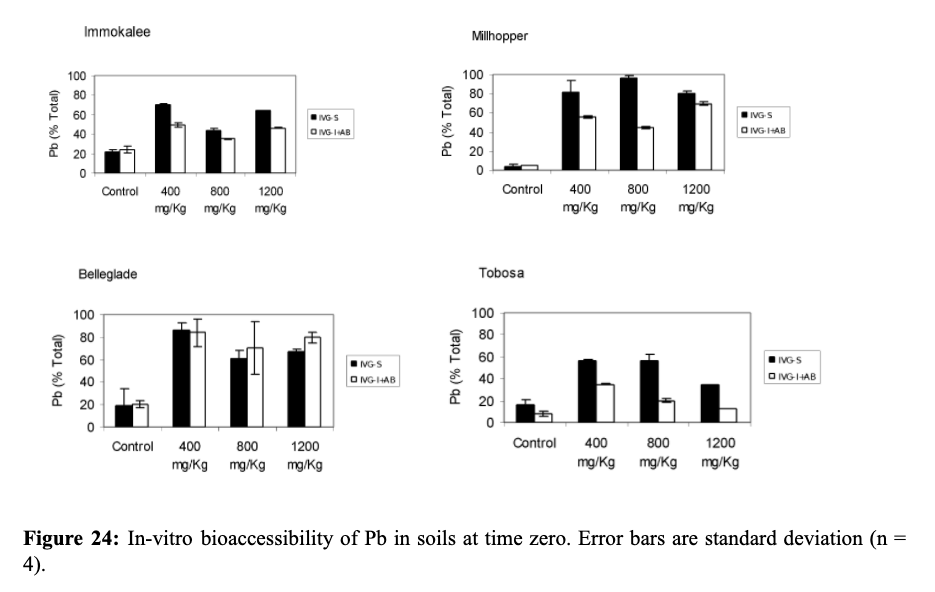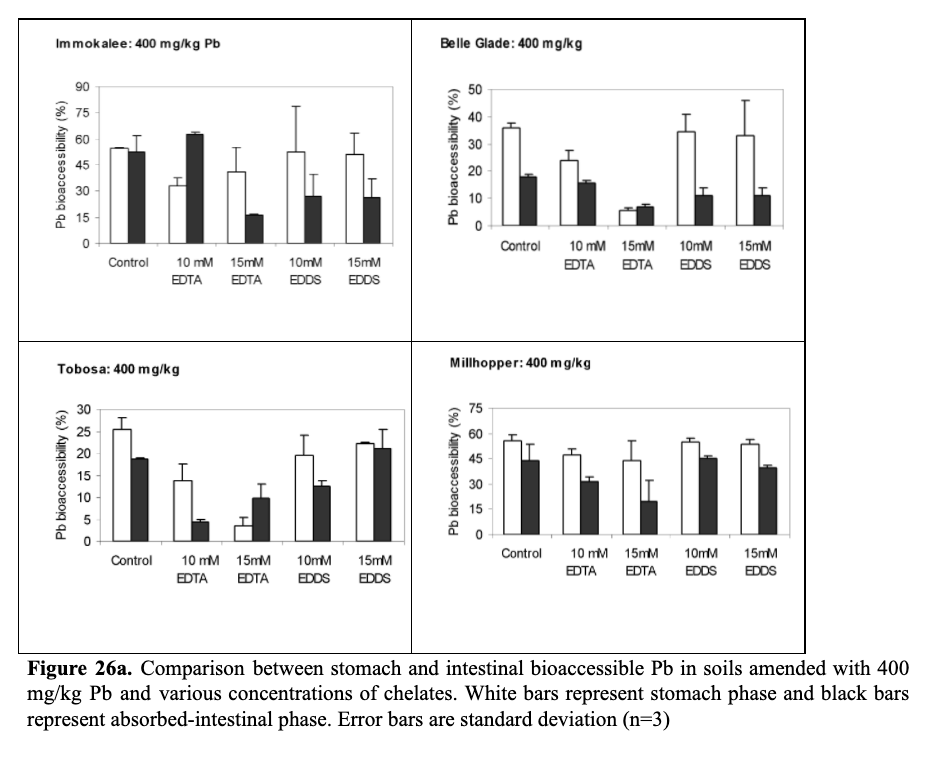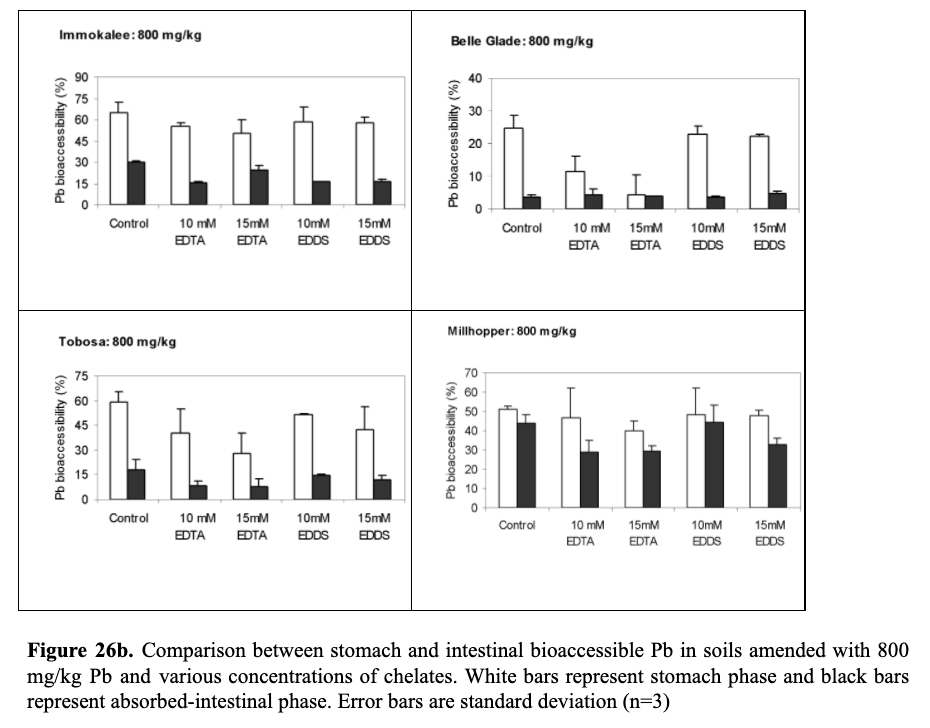The bioavailability of lead in the soil is a determining factor for human health risk and exposure. The word bioaccessibility is the soluble lead that dissolves in the human stomach and is absorbed by the intestinal tract (Saminathan et al. 2010). Lead bioavailability in the soil depends on pH, clay or sand ratio, and the form and solubility of lead. There is limited research on how lead interacts with the human gut. Animal models are commonly used but can be expensive, complex, and not represent the biochemistry and physiology of the human gastrointestinal tract (Saminathan et al. 2010).
Beaker-based physiologically based extraction tests have been used to determine the lead gastrointestinal availability in rats. The objective of this study was to mimic the biochemistry of the stomach and intestinal juices and the intestinal wall environment to test the relationship between the soil properties and the bioaccessibility of lead (Datta, Sarkar, and Andra. 2007).
The bioaccessibility of the soil was tested in a beaker model to stimulate the stomach and intestinal phase of the human digestive system. The spiked lead treatment in Immokalee showed that 56-65% of the lead was extracted in the stomach phase while 43-45% from the intestinal phase. In the Tobosa soil, 45-60% of the lead was extracted from the stomach and 8-13% from the intestinal phase. The Millhopper soil showed a similar trend to Tobosa, with 57-75% in the stomach and 14-39% in the intestinal phase. The Belle Glade was 8-28% in the stomach phase and 27-34% in the intestinal phase (Datta, Sarkar, and Andra. 2007).

The bioaccessibility of soil lead at the end of the experiment was determined. The results showed that the lead bioaccessibility increased with increasing lead soil concentration. The stomach phase had a higher lead extraction than the intestinal phase. The bioaccessibility of lead was in decreasing order was Immokalee, Millhopper, Belle Glade, and Tobosa. The lead bioaccessibility decreased with increasing chelating agent applications. Among the chelating agents, EDTA showed less lead bioaccessibility than EDDS (Datta, Sarkar, and Andra. 2007).


